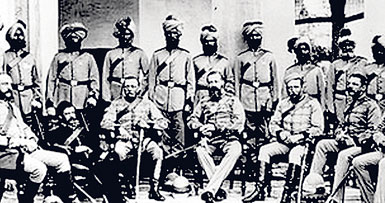A collection of Indian sound recordings from the early 20th Century, which has never been made public before, has been put online and is available to download free.
The gramophone records were only recently tracked down, gathering dust in the British Library, by Professor Shahid Amin of Delhi University.
"This is a unique collection and that it has gone online is a thing to be celebrated," he told the BBC.
 |
| Appointment of new Bengal governor during British rule in India. The recordings were made to teach British colonial officers serving in India the local languages and dialects spoken in Britain's Indian Empire, which in those days stretched from the frontier with Afghanistan all the way into Burma. |
 |
"We didn't just want to put the recordings on to CDs and then leave them in a research centre," he said.
"The people who really know these languages might be living in a village. They too can go to a cyber cafe and listen to these voices from the past."
Almost 250 gramophone records in all have been digitised and put on to the website of the Digital South Asia Library, which is run by the University of Chicago and the Centre for Research Libraries.
They contain songs and stories in 97 different languages and dialects compiled between 1913 and 1929.
Recording them all was a mammoth project, which involved a single gramophone operator criss-crossing the subcontinent. His cut-glass English accent can be heard introducing each new narrator and singer, who themselves sometimes had to travel hundreds of kilometres.
The archive includes the only known recording of a famous "dastango", or storyteller of Delhi, Bakr Ali, whose stories normally lasted for hours, rather than the three and half minutes that could be put on to a gramophone record. The Indian government hoped that the sound archive, complemented by 19 volumes of text, could be used to teach trainee civil servants from Britain the language of the region in which they were about to serve.
To help the British compare the different languages, a single, standard text was also translated and its narration recorded.
The project was known as the Linguistic Survey of India. The man behind it, George Grierson, chose the Biblical passage The Parable of the Prodigal Son to be this text.
Prof Amin says that perhaps this was not very appropriate for a country with relatively few Christians.
"Grierson really coyly remarks in a footnote that this was the best thing because here you have all the three tenses, past, present and future and all the three persons in a relatively short story," Prof Amin said.
"That was fine for a grammatical exercise. The real problem was that not everyone knew the story."
Prof Amin describes Grierson as a "linguistic genius" who dedicated decades of his life to this project. But after his retirement from the Indian Civil Service the recordings disappeared into obscurity - until now.
Courtesy BBC
|



